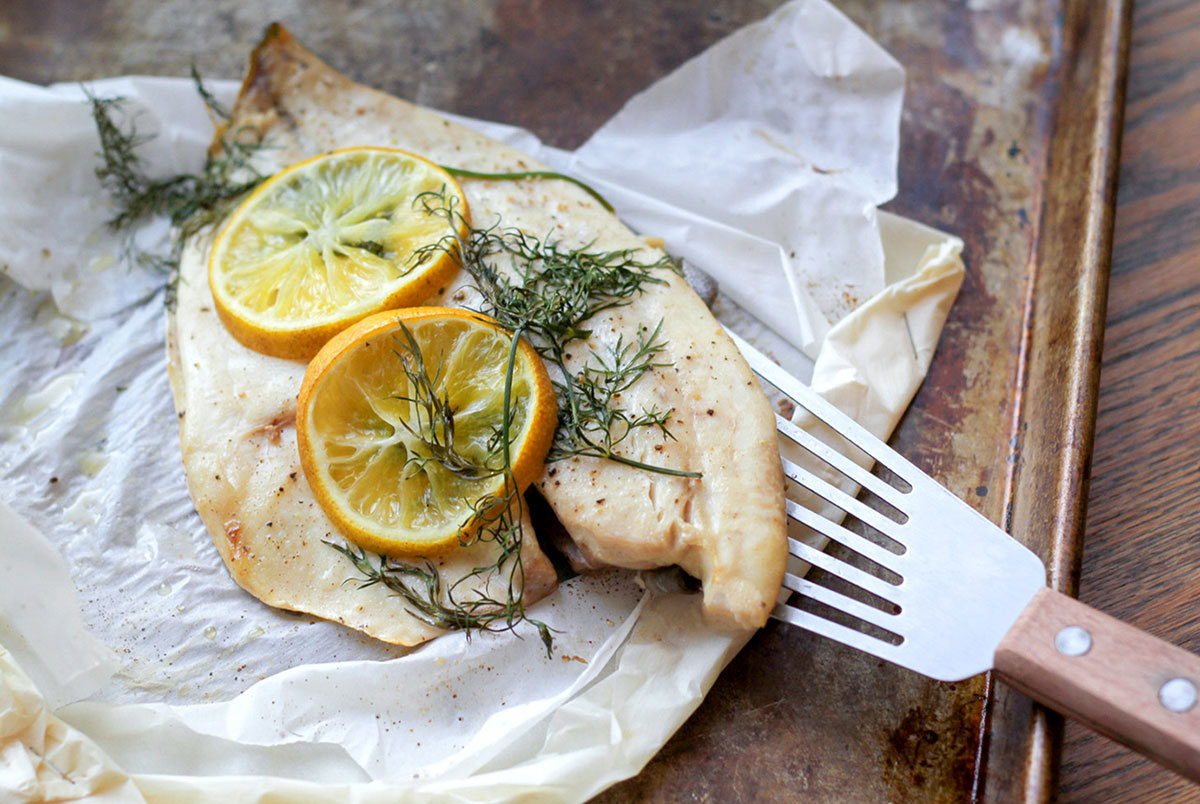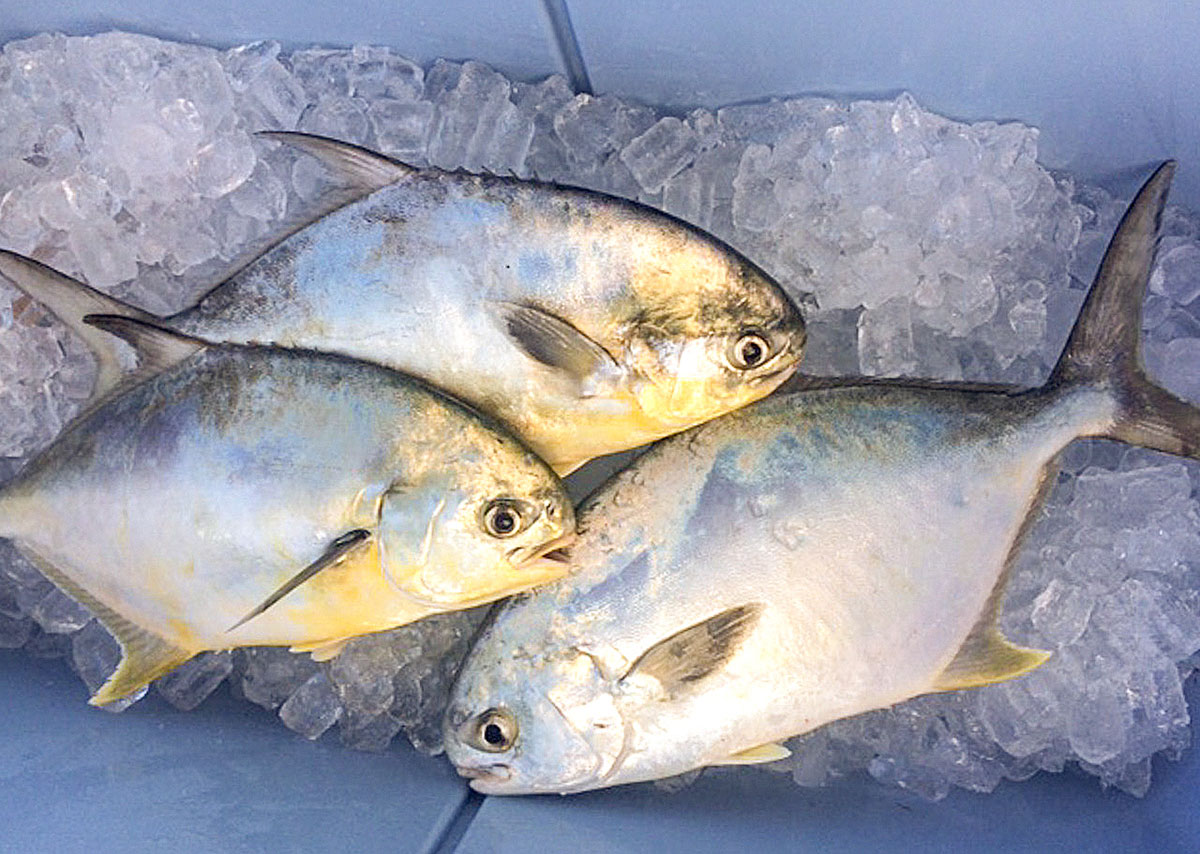No sauce and more herbs puts the pow in pompano

This simple take on classic pompano en papillote ensures buttery fillets without the fuss. PHOTOS BY DANIELLE ROSE
The Indian River Lagoon is a fisherman’s paradise. It’s the most biodiverse estuary in North America, with nearly 700 species of fish. If you ask me my favorite fish to catch or eat, I’ll probably give you a different answer every time. Right now, it’s pompano.
Catching bait is often my favorite part of fishing, and that’s especially true when it comes to pompano. They like to eat sand fleas, which are little crustaceans you find at the beach. When the tide is right, you can spot them along the shoreline, burrowing in the sand between the waves. Many fishermen use a special rake to scoop and sift them, but as kids we caught them just digging around at the water’s edge, and I still think that way is more fun.
Pompano like clean, fast-moving water. They congregate on flats along the inlet, scouring the bottom for small crabs and sand fleas. Once you catch one, you know you’re in the right spot. They’re a thrill to catch. They’re peppy and they fight hard for a fish of their size. They must measure at least 11 inches from the tip of the nose to the fork of the tail, and the daily limit is six per person.

Pompano en papillote, or pompano in parchment, is a classic New Orleans dish. Cooking fish this way is revolutionary for anyone who wants to cook more fish at home but doesn’t want the smell of fish lingering in the kitchen. This method solves that problem, and it’s so easy. The traditional recipe calls for smothering the fish in crab and butter. Pompano is naturally rich and buttery, but you’d never know it under that heavy sauce. I go with minimal ingredients inside the parchment packets, just some fresh herbs and lemon, to let the delicate pompano flavor shine.
I used to cut sheets of parchment in heart shapes and crimp them the way chefs do, but I no longer fuss with that. A rectangle works just fine, and if your folds aren’t tight enough, staple them. There’s no worry of staples getting in your food, because you slice open the packets across the top.
Cooking in parchment requires a leap of faith, because you can’t take a peek inside or test for doneness. Most fish fillets have a thick side and a thin side, but pompano fillets are uniform all the way across, so they cook evenly. The parchment puffs up and traps steam, so the fish doesn’t dry out. Trust me, this method works beautifully every time. Or listen to Mark Twain, who said pompano is “as delicious as the less criminal forms of sin.”

Danielle Rose
Danielle Rose is a seventh-generation Florida gardener and fisherwoman and descendant of the prodigious Summerlin family. A graduate of the University of Florida, she loves gathering friends and family around the table for homegrown food.











